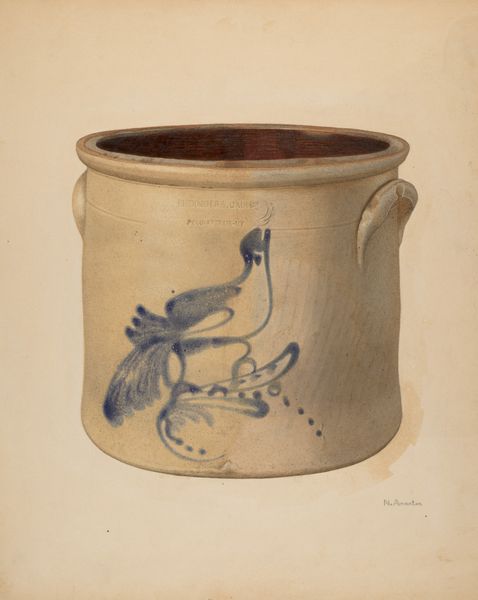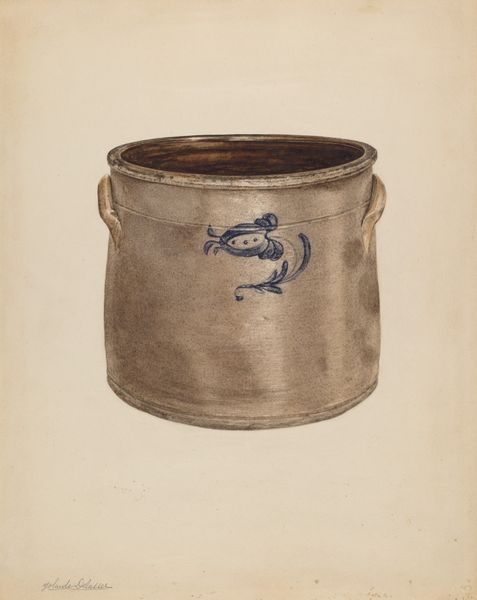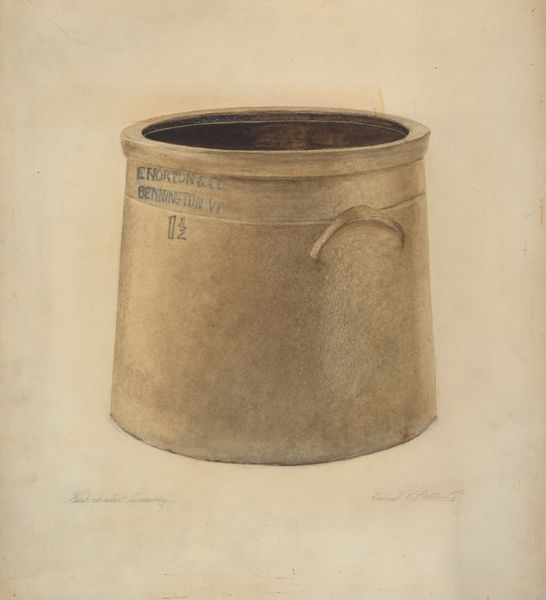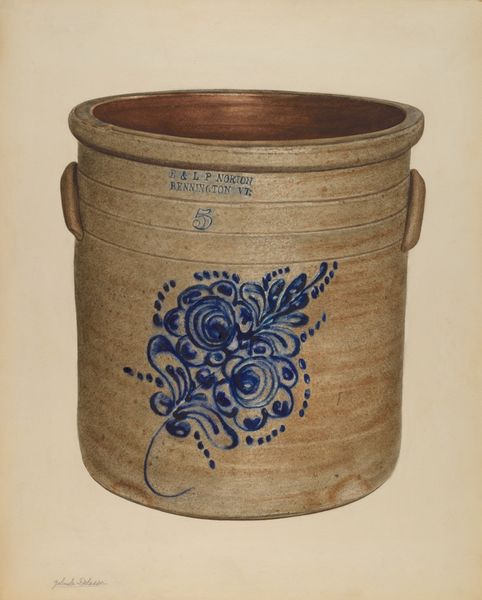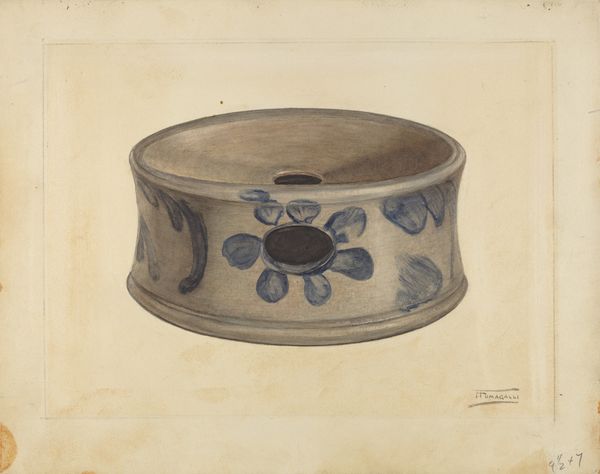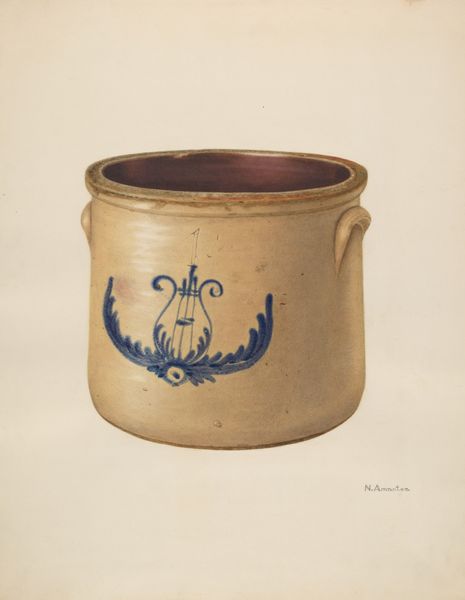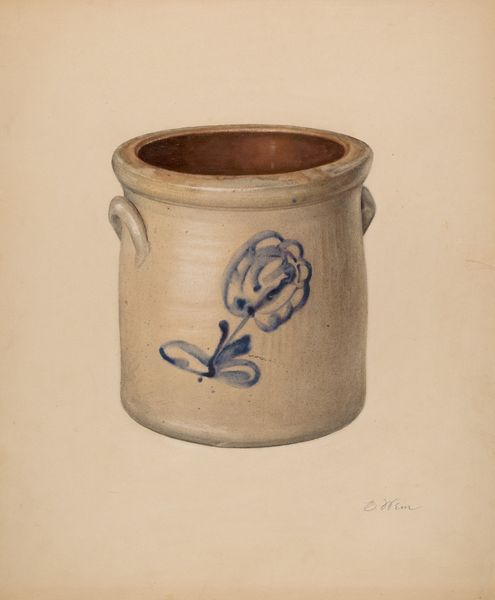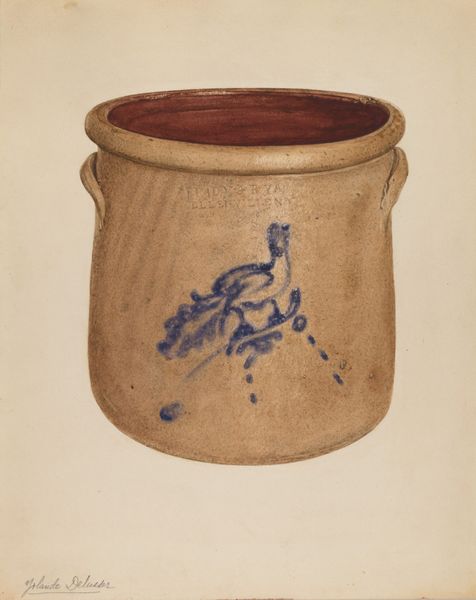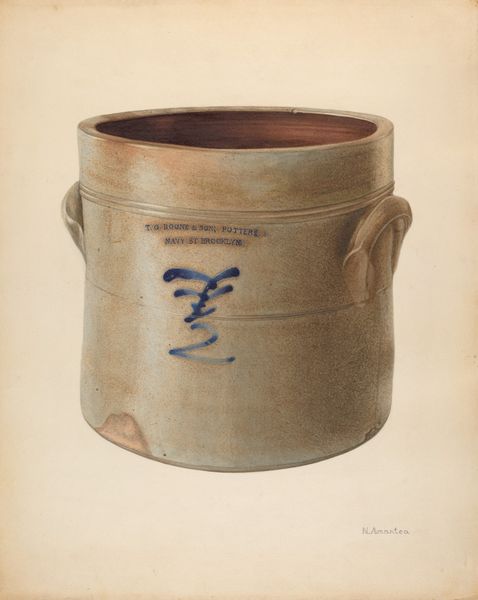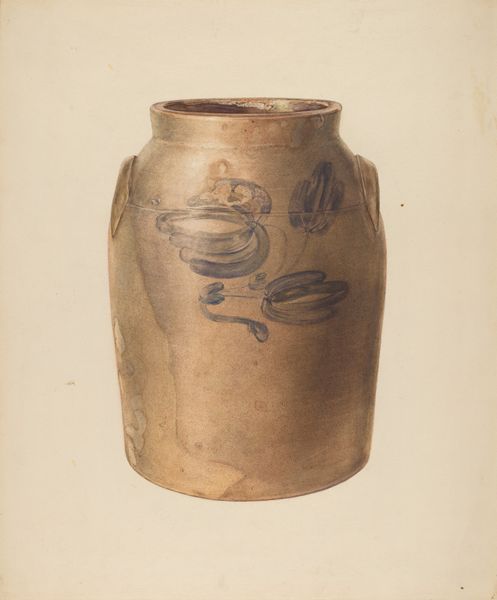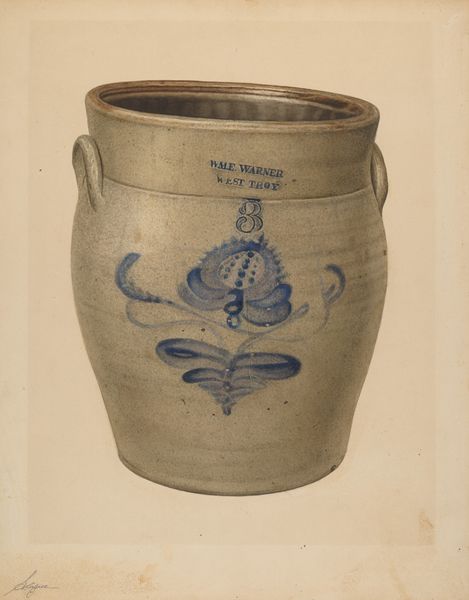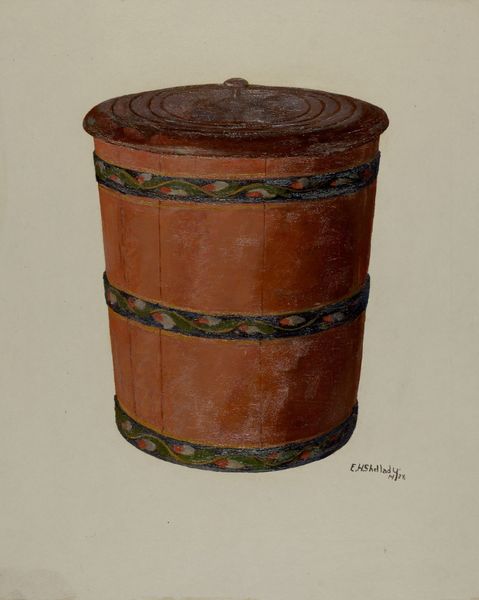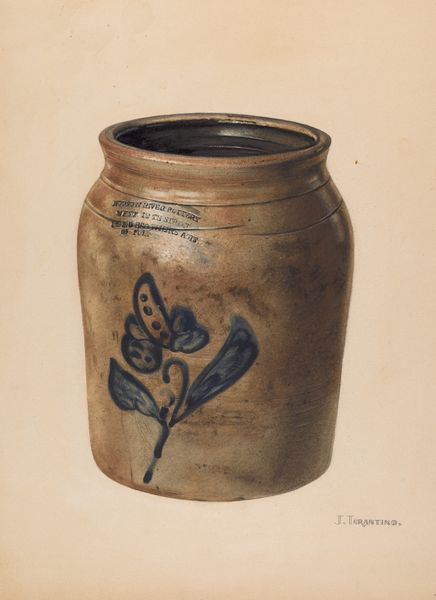
drawing, ceramic, watercolor, earthenware
#
drawing
#
ceramic
#
watercolor
#
earthenware
#
ceramic
#
earthenware
Dimensions: overall: 30.1 x 40.7 cm (11 7/8 x 16 in.) Original IAD Object: 10 3/4" High 11 3/4" Dia(top) 11 1/2" Dia(base)
Copyright: National Gallery of Art: CC0 1.0
Editor: Here we have Nicholas Amantea's "Crock," from around 1937 or 1938. It's rendered in watercolor and drawing on what appears to be earthenware. I'm really struck by the plainness of the subject, elevated through these artistic techniques. What do you see in this piece? Curator: The material properties are front and center. Look at the rendering of the earthenware itself. Amantea meticulously depicts not just the form but the texture, the subtle variations in color that speak to the firing process. We have this everyday object memorialized with watercolor and drawing techniques. Is he making a case for the value of craft and its materials, its history, and the work and expertise it represents? Editor: So, by depicting the earthenware so carefully, is Amantea suggesting that it's more than just a utilitarian object? Curator: Precisely! Consider the date – the late 1930s. The country was deeply entangled with questions of labor and consumption. The means of production, the accessibility of resources… This crock embodies the tension between mass-produced goods and handmade crafts. Also notice that stamped impression and “4.” label at the top of the crock. Editor: Yes, there is also an interesting label! That gives it an industrial, almost manufactured quality despite it being a crafted object, right? I initially saw only the handmade elements of the art, but now I see both are highlighted and made complex. Curator: Precisely, the labor involved becomes so clear and valuable. Thinking about how artwork captures not just aesthetics but production and labor helps contextualize the meaning embedded in its representation. It transforms how we understand ordinary objects like this crock, moving beyond pure function. Editor: I didn't think I'd be so interested in a simple jar! I'm now looking at things differently in terms of their physical reality and how they fit into broader narratives of society and manufacturing. Thanks.
Comments
No comments
Be the first to comment and join the conversation on the ultimate creative platform.
